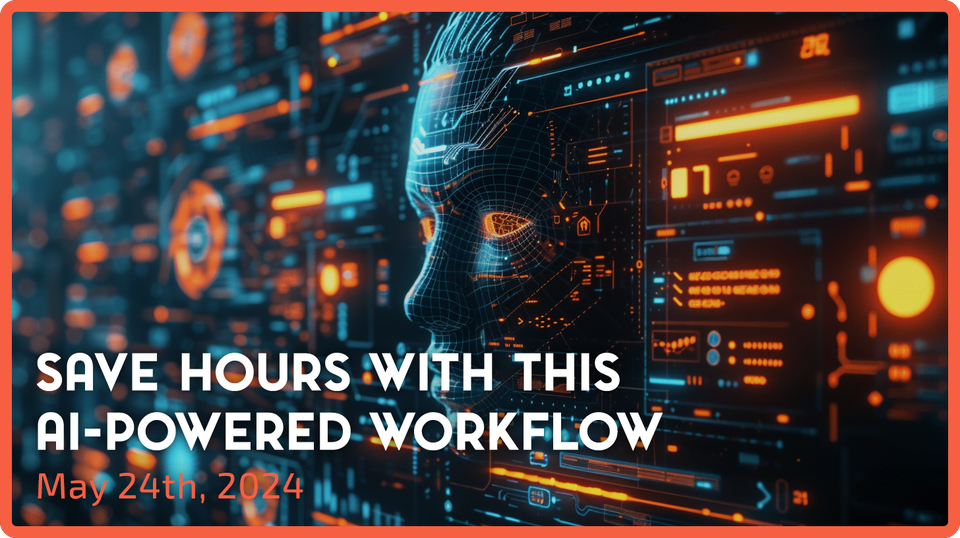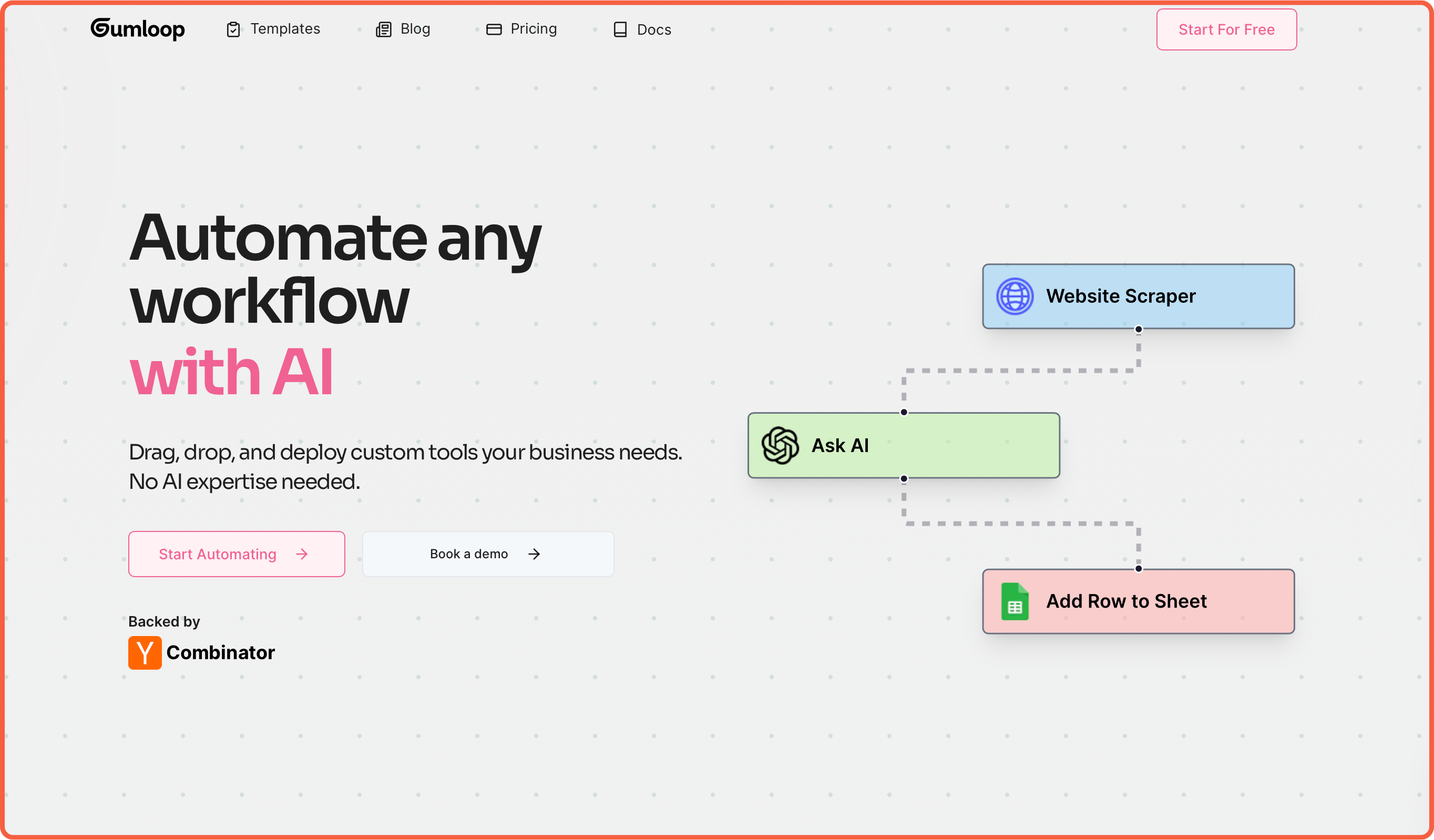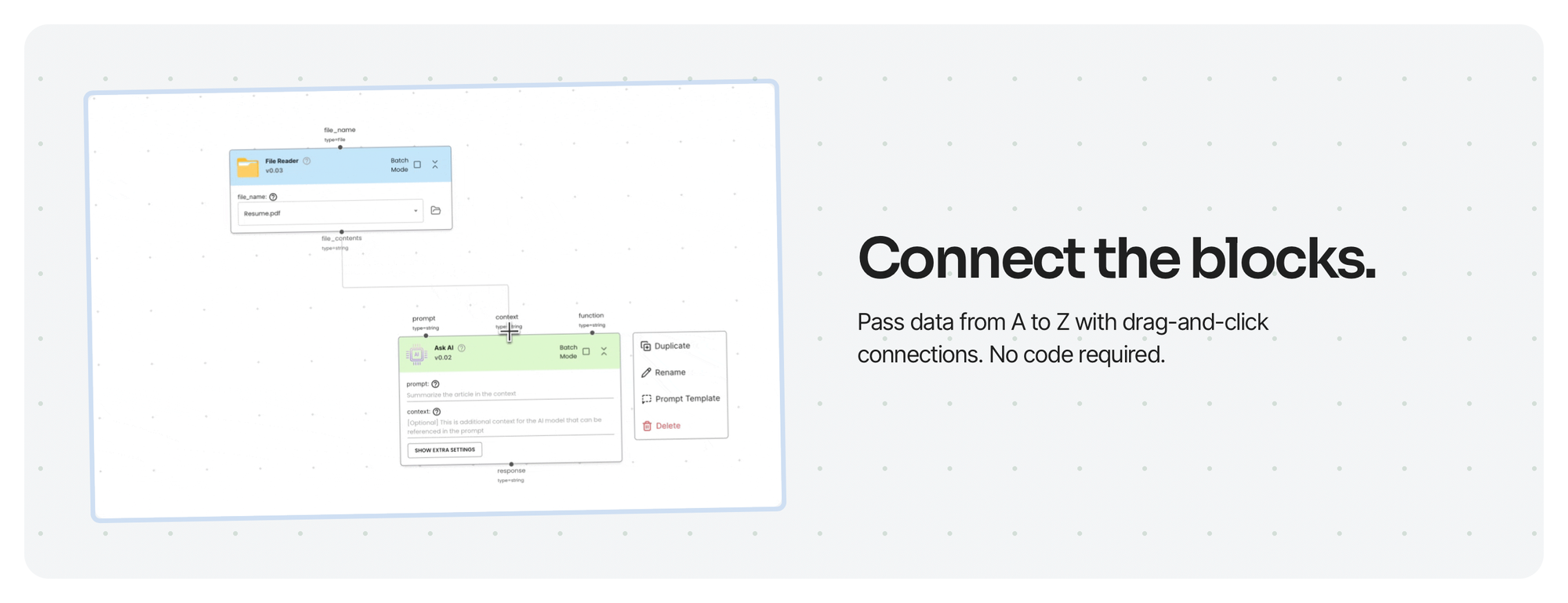Save Hours With This AI-Powered Workflow

Top Insights
Save Hours of Your Time With this AI-Powered Workflow
Sick of spending hours on training docs? AI enthusiast Rowan Cheung has a killer, AI-powered workflow for you. By combining Loom's video recording capabilities with ChatGPT, you can create comprehensive training resources in minutes instead of days.
First, record a Loom video walking through the task or process you need to delegate. Then, run that footage through Loom's new AI transcription to automatically generate a step-by-step SOP doc or training manual.
Now that document into an AI like ChatGPT to create a custom virtual assistant for new hires. They can rapidly get answers without interrupting your team. This intuitive AI workflow automates procedures, surfaces quality FAQs, and frees you up to focus on higher priorities.
A Comprehensive Breakdown of ChatGPT's Newest Features
ChatGPT-4o has stolen all the hype lately. But OpenAI has unveiled some other serious capability expansions you need to know about.

First up, a shiny new desktop app for Mac users. It lets you interact with the AI assistant via voice, upload files and images, and even create custom AI helpers. Windows users, don't fret, your version is coming later in 2024.
Direct data connectivity from ChatGPT to your Google Drive and OneDrive accounts is also here. We're talking seamless data analysis from cloud files, intelligent charting and visualization, bespoke custom reporting - insights galore with zero manual inputs. To discover all the latest features, check out AI YouTuber Wes Roth's full breakdown.
Prompt of the Week

An AI prompt for marketers is a text input designed to guide an AI like ChatGPT in generating creative marketing ideas and copy. It helps you leverage AI to enhance your campaigns and decision-making processes.
This Week's Feature: F-AI-Qs
They've gone through your offer - but lingering questions and doubts are all that's standing between them and whipping out their wallet. Miss answering those objections, and you risk watching hard-earned traffic fizzle out.
That's why dedicated FAQ sections can be an essential element for many high-converting landing pages. They proactively address any lingering sticking points.
But crafting an effective FAQ is an art. You need to get inside the minds of your prospects and pinpoint the questions still on their minds. The F-AI-Qs prompt helps you automate this by generating a list of 10 burning questions.
You can access the full prompt here
Take a sneak peak below:
YOUR JOB
Your job is to brainstorm a list of 10 potential “frequently asked questions” potential customers would have about my offer. The list should comprise of common concerns, objections, and inquiries that potential customers might have before buying.
CONTEXT
Here are some important details on my offer you should consider:
My Product/Service: [insert yours]
The USP: [insert yours]
The Major Benefits: [insert yours]
My target audience: [insert yours]
The Price: [insert yours]
I've also attached further background information on my target audience, offer and other useful details.
Here are a few examples of frequently asked questions to model and learn from:
Example #1 – A greens supplement in the health space
How do I know if AG1 is right for me?
What kind of benefits can I expect from taking AG1?
When should I expect to see benefits?
What makes AG1 different from other nutritional products?
How does AG1 taste?
🚀 These 27 A.I. “Growth Codes” Are A Shortcut to AI Advertising Domination
"They’re able to get REALLY damn good copy… that requires minimal editing… right out of the gate. It's pretty amazing”
Access All 27 A.I. "Growth Codes" Now
Unraveling AI
Subscriber Submitted Question: "Supposedly, Meta has a new "AI content policy. What's the deal here and what's important for me to know?"
Our Answer: Yes, they're rolling out a new labeling system to try and let their users know what media was AI-generated versus human-made. Here's how they say it'll work:
Meta's own AI (oh, the irony) will automatically detect industry-standard technical signals that a piece of media used AI tools during creation. Creators will also have the option to self-disclose when uploading AI-spun videos, audio files, images, etc. to trigger the "Made with AI" label.
Meta claims their goal is to keep AI-created content up on the platforms with added transparency through labels, rather than sweeping removal. For any pieces they deem to be misleading on important matters - expect more prominent label treatments.
Will it work? Will it be fair? Only time will tell.
Tool to Try

Gumloop is an AI-powered software platform that allows you to leverage cutting-edge language models to build custom AI tools, automate workflows, and streamline repetitive tasks. With its flexible template gallery and user-friendly interface, Gumloop empowers businesses and individuals to harness the power of AI without extensive coding knowledge.
AI Tool Highlights:
🧠 AI Model Integration: Seamlessly integrate powerful language models like GPT-3 into your custom AI tools and applications, unlocking a wide range of natural language processing capabilities.
🛠️ Template Library: Access a comprehensive library of pre-built templates for various AI use cases, including content generation, data analysis, task automation, and more, allowing you to quickly deploy AI solutions.
🔄 Workflow Automation: Streamline and automate repetitive tasks and processes by creating customized AI-driven workflows, saving time and increasing efficiency.

💻 No-Code Builder: With Gumloop's intuitive no-code interface, users can design and deploy AI tools without extensive programming knowledge, making AI accessible to a broader audience.
🔗 API and Integration: Integrate Gumloop's AI capabilities into your existing applications and systems through their API, ensuring a seamless integration with your existing tech stack.
🔒 Security and Privacy: Gumloop prioritizes data security and privacy, with robust measures in place to protect sensitive information and ensure compliance with industry standards.
One More Need to Know News Story
AI Software Engineers Make $100,000 More than Their Colleagues
The AI boom and a growing talent shortage has resulted in companies paying AI software engineers a whole lot more than their non-AI counterparts.
As of April 2024, AI software engineers in the U.S. were paid a median salary of nearly $300,000, while other software technicians made about $100,000 less, according to data compiled by salary data website Levels.fyi. The pay gap that was already about 30% in mid-2022 has grown to almost 50%.
“It’s clear that companies value AI skills and are willing to pay a premium for them, no matter what job level you’re at,” wrote data scientist Alina Kolesnikova in the Levels.fyi report. That disparity is more pronounced at some companies. The robotaxi company Cruise, for example, pays AI engineers at the staff level a median of $680,500 — while their non-AI colleagues make $185,500 less, according to Levels.fyi.
Mind Fodder

GOT 15 SECONDS?
Thanks for reading.
Until next time!
The AI Marketers
P.S. Want to get your AI tool in front of our audience of over 11,000 AI enthusiasts? Simply fill out this form to see if we're a good match.



